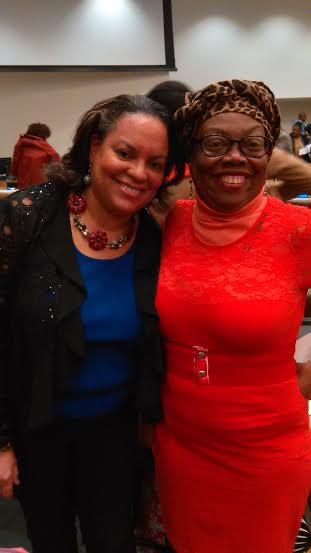GUYANA MAY 26, 1966 - MAY 26, 2020 FIFTY FOUR YEARS OLD
Murphy Browne © May 24-2020
Fifty-four years ago, on May 26th, 1966 Guyana (the former British Guiana) celebrated its political independence from Britain after 153 years. The British colony of Demerara-Essequibo was created on August 13, 1814 when the British combined the Dutch colonies of Demerara and Essequibo. On November 20, 1815 the three colonies (Berbice, Demerara and Essequibo) were formally ceded to Britain by the Netherlands. On July 21, 1831, the British combined Demerara-Essequibo with the former Dutch colony of Berbice as the new colony of British Guiana, now Guyana. Incidentally, both of my grandfathers were born in Dutch named villages (Kortbraadt and Sandvoort) in Berbice.
British Guiana was also known as the land of many waters and the land of six people (Africans, Amerindians, Chinese, East Indians, Europeans and Portuguese) with the nine groups of Amerindians being the indigenous people of the land. The petroglyphs found near Kurupukari in the Iwokrama rainforest in Guyana prove that Guyana’s indigenous people (Arawaks, Arecunas, Akawaios, Caribs, Macushis, Patamonas, Wapisianas, Warraus and Wai-Wais) have lived on the South American continent since at least 5000 BCE.
Historians have documented that Christopher Columbus and his crew were the first Europeans to sight the Guianas in 1498. Guyanese scholar and historian Ivan Van Sertima in his 1976 published “They Came Before Columbus: The African Presence in Ancient America” argues that there was an African presence in the Americas before Columbus. Columbus was quickly followed by other Europeans searching for gold in "Eldorado," the mythical city of gold. Many Europeans became rich on the coerced, unpaid labour of enslaved Africans. Beginning with the Dutch who colonized the Essequibo region when they established their first settlement on the Pomeroon River in 1581, Europeans exploited first the native people who they unsuccessfully tried to enslave, then the Africans. The Dutch would eventually colonize Berbice and Demerara and Essequibo before ceding the three colonies to Britain following the Congress of Vienna (held from September 1814 to June 1815.)
British Guiana was sometimes referred to as “Bookers Guiana” because of the stranglehold on the country’s economy by the British business firm, Booker Brothers, popularly known as Bookers. The company which had its beginning when Josias Booker senior, arrived in the colony (from Britain) to work as the manager of a cotton plantation in 1815, was formally established in 1834 as Booker Brothers & Company and held a monopoly on the economy of British Guiana by the end of the 1800s. The history of Bookers is inextricably linked to Britain’s slave holding and imperialist past. When the Congress of Vienna divided the northeast coast of South America among Great Britain, the Netherlands and France in 1815, merchants from those countries quickly began to exploit the region's natural resources. To exploit the natural resources of the region and avoid the backbreaking work which this entailed, the Europeans continued to brutally force enslaved Africans to work without pay. The Booker brothers - Josias, George, and Richard - were part of this group who between 1815 and 1834 bought several plantations and established several merchant trading houses in Liverpool, Britain, to exploit a flourishing sugar and rum trade. Having established Booker Brothers & Company in 1834, they bought their first transport ship the “Elizabeth” in 1835.
In 1854, Josias Booker junior and John McConnell (who had worked as a clerk for the Bookers since 1846) created a new partnership which they named the Demerara Company. Milton Moskowitz writes in his 1987 published book “The Global Marketplace: 102 of the Most Influential Companies Outside America” that the Bookers Brothers company "became the principal shopkeepers of the colony," building a formidable trade during the late 19th century. Their "Liverpool Line," established in 1887, became one of the top shipping links between South America and Europe.
While the enterprising Booker brothers and other White men from Britain were establishing companies (including Sandbach Parker) and making money hand over fist in British Guiana, racialized people were relegated to the backbreaking and underpaid work that built European wealth. In the 1830s the Booker family collected thousands of pounds in compensation for losing their property (enslaved Africans) on August 1-1834. With that windfall, they were able to expand their company, buy ships and monopolize trade in British Guiana.
At the time of Guyana’s independence from Britain the population included not only the original people (Amerindians) of the land but also some of the descendants of the colonizers from Britain, the descendants of the enslaved Africans and the descendants of the people who immigrated to British Guiana as indentured labourers. Although the Portuguese from Madeira (May 3, 1835, on the ship, "Louisa Baillie") were the first group of indentured labourers to arrive in British Guiana, the largest group of indentured labourers hailed from the Indian sub-continent, arriving in Guyana beginning May 5, 1838 on two ships, the Hesperus and the Whitby.
The population of Guyana 54 years after independence also includes the descendants of the Chinese who immigrated as indentured labourers beginning in 1853 when three ships (the Glentanner, the Lord Elgin and the Samuel Boddington) left Amoy in the Fujian Province of China with 1,549 labourers bound for British Guiana.
At 54 years old Guyana is still experiencing growing pains but there are “developed” countries like Canada, Australia, New Zealand and the U.S.A that achieved political independence many decades ago and they are still experiencing growing pains. In the midst of a global pandemic, Guyanese celebrate 54 years of independence on May 26-2020.
Murphy Browne © May 24-2020
























